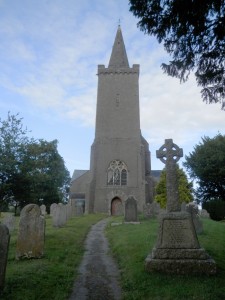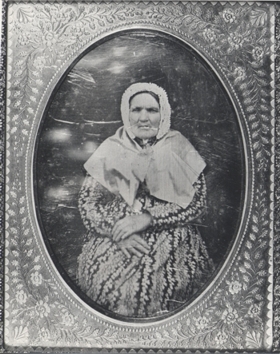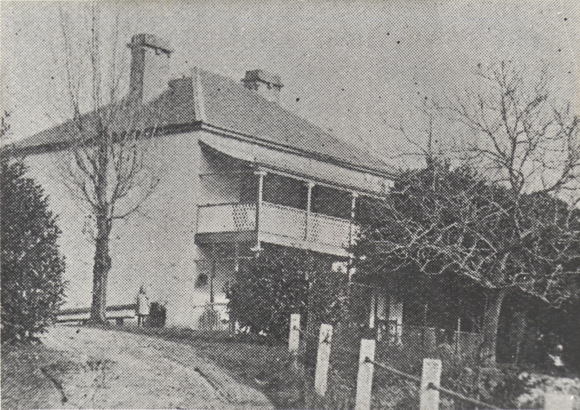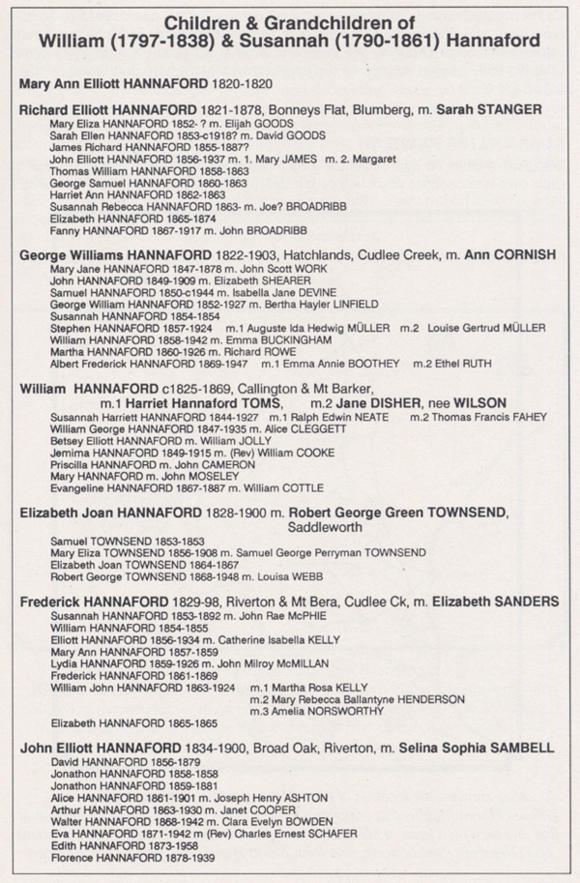1 Name. 61 Variants
Anyone who’s been researching been researching for longer than a week will know that name variants play a big HUGE part in research. Both with first names, and surnames. Figuring out how names were potentially spelt (or ‘spelled’ for my North American readers) can be the difference between finding them or not.
I’m not going to go into the in’s and out’s of name variants, but rather I wanted to highlight two particular surnames, and all the variants that I’ve found for them so far. There’s 61 of them for one, and 31 for the other. And truth is, I really wouldn’t be surprised if more show up.
So let’s start with ELLIOT. This is one of Mr Lonetester’s branches, while ELLIOTT (with two “Ts”) is one of mine, with no connection that I know of between them at this stage. We all know that there are numerous variants of Elliott: one “L”, two “Ls”, one “T”, two “Ts”, but what I didn’t realise is just how many more there really are.
One thing I like to do when beginning searching a new surname is to note down all the variants. That way when I’m searching, be it a website, a book or records, I can look for them all, and see what I come up with.
Mr Lonetester’s ELLIOT family possibly came from Sussex (that’s still to be verified), but I headed (online) to the Sussex Family History Society to browse around and see what they had. Now they have the coolest thing on their website, and that’s the Sussex People Index. In their words …
The Sussex People Index consists of any names that anyone can submit from anywhere – the only condition is that the event reported must happen in Sussex and there must be an identifiable source (not a website please). Wills’ beneficiaries witnesses and lawyers, information from Birth Marriage or Death certificates, tax records, settlement orders, masters and apprentices, landowners, licences issued to publicans, magistrates, churchwardens, names taken from a book which has been indexed, etc. Please not baptisms, burials, memorial inscriptions, census, or pre-1837 marriages which all have their own indexes. There are 120,000 entries referring to 230,000 people with 11,730 surnames (excluding variants).
So anyone can look at the list of surnames, whether you’re member or not, with members being able to log-in and check the details (entries for each name). Now I am a member, but have forgotten my log-ins, so will follow up on that one later, but I was able to use the surname list to create a list of alternate spellings which was handy.
My list of variant spellings for ELLIOT/ELLIOTT are:
Eleot, Eleott, Elicot, Eliot, Eliote, Eliots, Eliott, Eliotte, Ellioit, Ellioitt, Elliot, Elliote, Elliott, Ellliott, Elloit, Elloitt, Ellot, Ellott, Ellyat, Ellyate, Ellyatt, Ellyet, Ellyett, Ellyot, Ellyott, Ellytt, Elot, Elyat, Elyatt, Elyeat, Elyet, Elyete, Elyett, Elyot, Elyote, Elyott, Elyotte, Elyout, Leliat, Leliet, Leliot, Leliott, Lelliat, Lelliatt, Lellicot, Lelliet, Lelliot, Lelliott,Lelloitt, Lellut, Lellyett, Lellyot, Lellyott, Lelyet, Lelyot, Lelyoth, Lelyott, Lylliot, Lylliott, Lyllyatt, Lyllyott.
And while I was there, Mr Lonetester’s ELLIOT married an ELPHICK (from Sussex), so I created a variant list for Elphick as well. Again, I was blown away by the number of variants that there are. 31 just for Elphick, who knew!
My list of variant spellings for ELPHICK are:
Elfeck, Elfecke, Elffeck, Elffecke, Elfhick, Elfic, Elfick, Elficke, Elfig, Elfigg, Elfrick, Eliphicke, Ellfeck, Ellfick, Ellpeck, Ellpeheg, Ellphick, Elpheck, Elphecke, Elpheke, Elphic, Elphich, Elphicke, Elphik, Elphycke, Elpick, Elpiiick, Elpphick, Elprick, Elspick, Lphick.
So to anyone that says “my family never had any variant spellings”, I say “rubbish”. There’s always name variants. Sometimes it’s on purpose, sometimes it’s a transcription error either by the person who created the record way back then, or by someone transcribing it more recently. Names were so often written as they sounded, rather than a strict spelling, and combine that with various accents, and you can see why there’s so many variants.
Whether you use the Sussex People Index list or any name other list, to create your own name variant list, is entirely up to you.
But this is just a reminder to keep name variants in mind when searching.
My First Hannaford Family in Australia
For Australia Day this year I decided to write about the Hannafords, who are one of my immigrating families. Or more specifically I should say, about Susannah Hannaford (nee Elliott), who is truly the matriarch of the family, and her children.
I admit I am in awe of Susannah, in some ways anyway. She was a widow by age 48, not an easy thing for anyone, but then to pack up all of your belongings and move to the other side of the world, to a colony that had only been founded a few years before, with her six children, leaving her family, friends and whole life behind, to start again from scratch. I can’t even begin to think of what that would be like or how she managed it. But she survived. So did her children, and now her descendants number the thousands.
But let’s go back a little bit first.
Back in Devon …
Susannah Elliott was born in 1790 in the market town of Totnes, in Devon, England. Meanwhile the Hannaford family (the ones I’m writing about anyway), grew up just four miles away in the little town of Rattery. I mention that as the Hannaford name in Devon is much like Smith or Brown everywhere else. Hannafords are everywhere!
When Susannah was 30 years old, she married William Hannaford (one from the neighbouring parish in Rattery), and who was actually a few years younger than her. Sadly William died at age 42, leaving Susannah with six children ranging in age from 17 down to 6.
Devon at that time (actually probably England at that time) had limited employment opportunities, and with high taxes (land tax and window tax for instance), it would seem that emigrating to a new land offered better prospects than staying in Devon.
The Voyage and Arrival …
So in 1840 Susannah and her clan together with 164 other passengers, boarded the “Brightman”, which was a three-masted barque which sailed from London, to Plymouth, and on to South Australia, making a quick voyage in just 106 days. Again, I can’t envisage what that would have been like. The closest I’ve been to this is a large cruise ship for 21 days which doesn’t even vaguely compare in any way whatsoever!
The Verco’s were also aboard the Brightman, and the following is an extract from the “Early Recollections of Sir Joseph Verco” which was written around 1930.
“The Brightman was a dry and comfortable ship. The bunks were arranged athwart ships along the sides of the vessel leaving a passage down the middle of the ‘tween decks. If in bed the passengers had to shift pillows from one end of the bunk to the other else he would be lying with his head down and his feet at a much higher level. Captain Nockells was a religious man conducting regular Sunday services, and he never failed to close with Psalm 139 verses 7-12. He would then invoke the blessing of God on the ship and those within, followed by the benediction. The Brightman made good passage of only 106 days. Keeping as much to the eastward as possible on the way south to avoid the dreaded Cap San Roque and its leeward currents. They sailed close round the Cape of Good Hope, then well to the north … and anchored in Holdfast Bay on 10 December 1840.
From the time of anchoring to the time of departure from the ship, there was a delay of seven days for some passengers. Boats transported the passengers and their luggage to land. Many floatable articles, such as wooden framed houses, manufactured and packed in England for immediate erection on landing in Australia, were simply tossed overboard and then tided to shire. All this took time and meant a long and tedious wait onboard for passengers.
When not concerned with the activity going on around them, those onboard found themselves preoccupied with thoughts of what awaited them beyond the shores amid the dense forest of trees and scrub … As it was they could see hundreds of natives moving along the shoreline. More than once they had been startled by the noise of a corroboree, one of which had been followed by fierce fighting resulting in many naked warriors being speared to death. Even at a distance it was somewhat frightening, but still more unnerving had been the screaming and yelling of the lubras as they mourned their dead.”
From the ship at Holdfast Bay (now Glenelg) it was a case of making the trip to Emigration Square in Adelaide, approximately 12 kilometers away, and with no roads. For many it was a case of walking the trip while for others they travelled by bullock dray. Emigration Square, situated on the Parklands, just west of Hindley Street contained 30-40 wooden huts in 1839-40, which were made for newly arrived emigrants to have a place to stay until they moved on.
Settling in South Australia …
The records show that the first house Susannah bought in South Australia was a 2 acre property at Unley in 1841. This was a small cottage and she established a mini farm on the land. By this time her two oldest two sons, Richard and George, went off cattle herding for the South Australian Company. And no doubt it was during one their travels that they heard of “fertile land with springs and running water 25 miles from Adelaide”. So George and his friend from the ship, James Verco, set out to find this land, and found it at Cudlee Creek, in the Adelaide Hills.
George was impressed with it, so much so that Susannah immediately bought land there, and in 1849 had a cottage built from stone quarried on the property. They named this property “Hatchlands” after the family property in Devon “Hatchland”. And this was the start of the Hannaford’s at Cudlee Creek. And today (six generations and 168 years later), they are still in the region.
As her family grew up and got their own properties, you will find descendants of Susannah’s living at Bonney’s Flat, Birdwood (Blumberg), Riverton, Saddleworth and of course Cudlee Creek (all in South Australia). And some of the property names associated with the family are ‘Broad Oak’, ‘Mount Bera’, ‘Riverside’, ‘Dingo Vale’, ‘Wattle Vale’, ‘The Briars’ and ‘Greenhills’.
The Hannaford’s have been heavily involved in the Fruitgrowers and Agricultural Associations for many years, and were known for their top class and prize winning apples. Some even winning international prizes. And I’m proud to say that today there are still family members running these generations-old apple orchards.
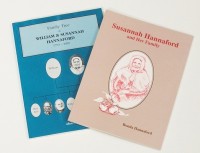 Of course Susannah and her family’s story doesn’t stop there. There are many achievements and noteworthy things from numerous descendants, but it’s too much for this post. But for anyone that does want more info on the family, I suggest getting a copy of both the following books, as they contain plenty of detail:
Of course Susannah and her family’s story doesn’t stop there. There are many achievements and noteworthy things from numerous descendants, but it’s too much for this post. But for anyone that does want more info on the family, I suggest getting a copy of both the following books, as they contain plenty of detail:
– Susannah Hannaford and her Family
– The Family Tree of William and Susannah Hannaford 1790-1990
This chart below shows Susannah and William Hannaford, their seven children (the first one died in infancy), together with their grandchildren. Seeing this you’ll understand WHY there are so many Hannaford’s around now.
Susannah Hannaford (1790-1861)
Truly a pioneer
And the matriarch of an incredible clan

